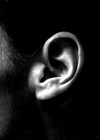Audiology features
World Health Assembly adopts a resolution on hearing loss: a defining moment for the global hearing health community
The World Health Assembly recently adopted a resolution on hearing loss. In this article Shelly Chadha and Alarcos Cieza outline how the resolution came to be and how the World Health Organization and its partners plan to implement it. The...
Public health planning for hearing impairment (2017)
In 2009 Professor Andrew Smith and Dr Daksha Patel identified the need for awareness of public health methods in hearing healthcare planning. In 2010 the first training course was held, and since then 760 health workers from 41 countries have...
Unanswered questions in adult ototoxicity associated with platinum-based chemotherapy
Do the potential side-effects on hearing and tinnitus need to be a ‘necessary evil’ of platinum-based chemotherapy? How strong is our evidence base when offering advice to patients and fellow clinicians? David Baguley and his team from the University of...
Diabetes and hearing loss: a review
As hearing health professionals we often ask, especially in older patients, if they have diabetes; but what is the link? How is it manifested and should it change current practice? Alec Lapira reviews the changing evidence. Early attempts to establish...
Thyroid dysfunction and Meniere’s disease: is there a relationship?
The set of symptoms described as Meniere’s disease may have several causative factors. Timothy Hain and Patthida Maroongroge look for a relationship in the literature between Meniere’s disease and hypothyroidism. Meniere’s disease (MD) affects around two in 1000 people and...
Human immunodeficiency virus and hearing impairment
With an estimated 36.7 million individuals living with HIV / AIDS and literature reporting that these conditions contribute to hearing loss, it is surprising that more focus and resources are not employed to tackle this major hearing health concern. Yolandé...
The effects of hormonal changes across menstrual cycle on high frequency auditory thresholds
Physiological changes during the menstrual cycle are well documented; do these changes extend to the auditory system? Lalsa Shilpa Perepa and Rewa Indurkar delve into the literature to find the evidence. Menstrual cycle refers to a series of changes that...
OTC hearing aids
The potential for the deregulation of hearing aid technology, through the Over-The-Counter Act has led to a tremendous amount of opinions and views from all stakeholders in the US. You don’t have to go far on the internet, social media...
Prudent audiology
Introduction In January 2014, Professor Mark Drakeford, Minister for Health and Social Services, defined Prudent Healthcare as, “Healthcare that fits the needs and circumstances of patients and actively avoids wasteful care that is not to the patient’s benefit.” ‘Prudent’ healthcare...
Patient-centred audiological rehabilitation: facilitating and hindering factors for implementation
Introduction Patient-centred care in the health sector is a worldwide concern [1, 2]. Patient-centred rehabilitation is characterised by availability, appropriateness, preference, and timelines [3]. A consensus report by the Institute of Medicine [4] defines a patient-centred approach as ‘providing care...
Leadership challenges in the world of AQP and accreditation – learning from experience
The words ‘choice and competition’, ‘any qualified provider (AQP)’ and ‘accreditation’ have irrevocably become part of audiology jargon in the last two years in England. Commissioners who chose ‘Adult Hearing Aid Services for age-related hearing loss’ have begun the process...
Leading and managing audiology service through a social enterprise model
As these things sometimes happen, our first conversations about Social Enterprise happened pretty much by chance and in our case were a by-product of discussions about a new department having outgrown the current one. The National Health Service (NHS) Audiology...
















